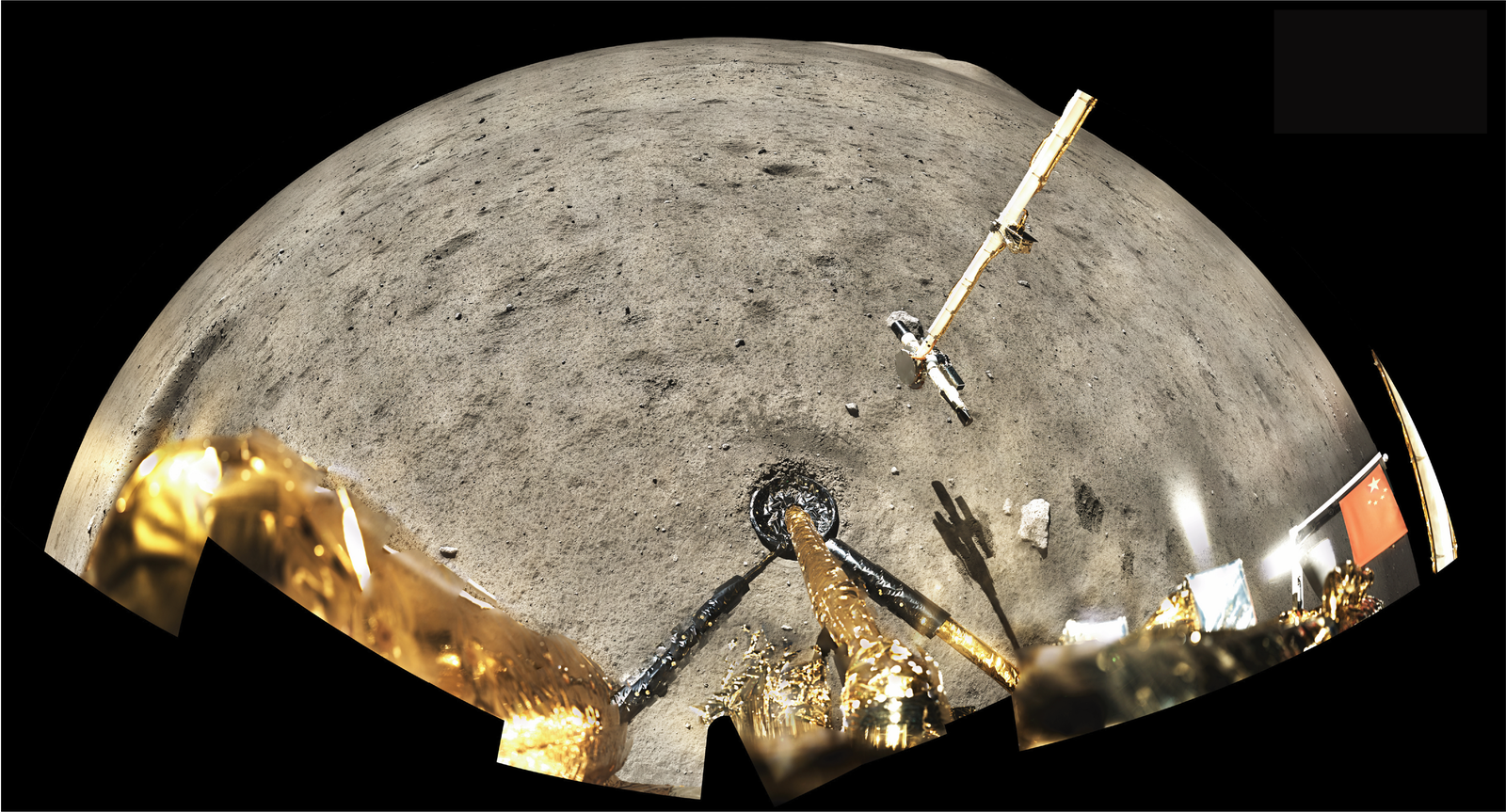New Moon Rocks Brought to Earth Have Scientists Wo
New Moon Rocks Brought to Earth Have Scientists Wondering How They Melted - Gizmodo

A image of the landing site of Chang’e-5 in Oceanus Procellarum.
Lunar material brought to Earth last December—the first new Moon rocks scientists have gotten their hands on since the 1970s—have been found to be about a billion years younger than previously dated samples. That means that there was liquid magma on the Moon a billion years more recently than previously known, raising questions about how the Moon got hot enough for its rock to melt.
The Moon is about 4.5 billion years old and is generally thought to have formed when the primordial Earth and some earlier planet collided, with the debris from the collision glomming together in orbit around our planet to form the Moon. But the Moon’s more recent history (meaning the last 3 billion years or so) remained shrouded in obscurity.
The two newly dated samples are basalt rock from Oceanus Procellarum, or the Ocean of Storms, a massive dark splotch on the Moon’s near side. The samples were picked up by the Chinese Chang’e-5 mission, which collected the samples on December 1, 2020, and returned to Earth with them two weeks later.
The researchers expected the lunar samples would be young because of earlier mineralogical and spectral analysis of the region, but they didn’t know quite how young. The predicted age range for the rock was anywhere between 1.2 billion and 3.2 billion years old; after testing the lead isotopes in the samples, the true age turned out to be 1.963 billion years old, give or take 57 million years, which is important because it shows parts of the Moon were hot enough for there to be liquid rock (lava) on the surface more recently than previously known. The team’s results were published today in the journal Science.
Chang’e-5’s sample return module back on Earth in December 2020.Photo: Chinese National Space Agency’s (CNSA) Lunar Exploration and Space Engineering Center
Lunar basalts are visible in a patchwork of cooled rock flows on the lunar surface. But to know how old they are for sure, scientists need to samples. “Our results show that lavas are 2 billion years old, which is 1 billion years younger than any other dated lava flows sampled on the Moon,” said Katherine Joy, a lunar geologist at the University of Manchester, in an email to Gizmodo. “We also showed that the basalts don’t exactly fit into the types of basalts we have previously seen before in Moon rocks, suggesting that they represent an origin from a different part of the Moon’s mantle.”
“The big question we have to answer now is: how did the Moon retain enough heat for such a long time (i.e., two and a half billion years after it formed) to enable melting of its interior and generate volcanic eruptions at its surface?” Joy added.
Magma on the Moon could come from a few sources. Rock could’ve melted early in the Moon’s history, when it was much hotter than today because of the conditions of its formation. (Earth, too, used to be incredibly hot.) Or the heat could have come from radioactive decay from material in the Moon, which is seen in the lunar samples from the Apollo missions. The recent research team didn’t see evidence of radioactive heating in the Chang’e-5 samples, so what melted the rock 2 billion years ago remains unknown.
Lunar craters imaged by Apollo 8 in December 1968.Image: NASA/JSC
A couple alternatives are impacts on the Moon (in case you didn’t notice, it’s covered in craters) and tidal heating. Just as the Moon tugs on Earth gravitationally, causing tides, so too does Earth pull on the Moon. But the Moon has no plate tectonics, so all that yanking and scrunching generates heat through friction.
“I like thinking of the ages as anchors,” said Carolyn Crow, a planetary scientist at the University of Colorado at Boulder and a co-author of the paper, in a video call. “Now we’ve got this one data point—we know this happens at this time—and now we need all our models to explain this one data point,” referring to the uncertainty about what cooked the rock some 2 billion years ago.
Thankfully, more data is on the way. The Chang’e-5 samples are something of an appetizer for the upcoming NASA-led Artemis missions, which will bring many more rock samples to Earth for study.
Since the Moon is a benchmark for dating other planetary surfaces, the more these lunar rocks can tell us, the better we’ll understand the ages of other worlds. The Chang’e-5 rocks are just the beginning of a renewed interest of lunar science.
Subscribe to our newsletter!